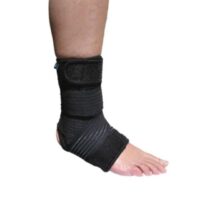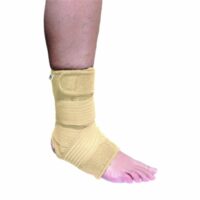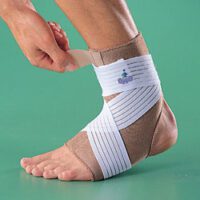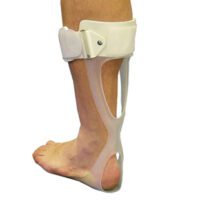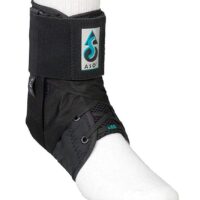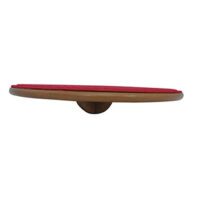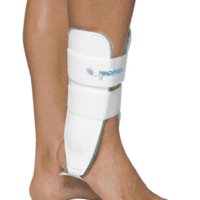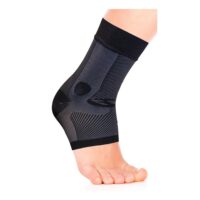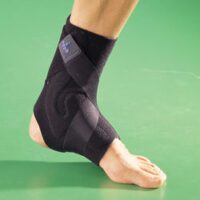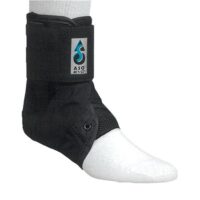Chronic Ankle Instability
Article by Zoe Russell
Chronic Ankle Instability (CAI)

What is Chronic Ankle Instability?
Chronic Ankle Instability (CAI) refers to the recurring sensation of your ankle giving way, often following an ankle sprain. This condition can disrupt your daily life, leading to repeated injuries, discomfort, and decreased physical activity. Without proper management, CAI can increase the risk of osteoarthritis in the ankle joint.
Why Does CAI Occur?
Chronic Ankle Instability typically develops after an ankle sprain that hasn’t healed correctly. Repeated sprains can weaken the ligaments around the ankle, reducing the joint’s stability. Over time, this can create a cycle of instability, making the ankle more prone to further injuries.
How Does CAI Affect You?
CAI manifests through symptoms like persistent ankle pain, swelling, and a tendency for the ankle to give way. These symptoms can severely limit your ability to participate in physical activities and even interfere with simple tasks like walking on uneven ground.
What are the Solutions for CAI?
A physiotherapist plays a crucial role in managing CAI by addressing both the symptoms and the underlying causes. Here’s how:
- Targeted Strengthening Exercises: Strengthening the muscles around the ankle joint can help stabilise the ankle, reducing the likelihood of future sprains.
- Balance and Proprioception Training: Enhancing your body’s ability to sense movement and position (proprioception) is vital for preventing further injuries. Balance exercises are a key part of this process.
- Manual Therapy: Techniques like joint mobilisation and manipulation can improve ankle function, reduce pain, and increase the range of motion.
- Education and Prevention: Your physiotherapist will guide you on activity modification, appropriate footwear, and the use of ankle taping to prevent further injuries.
- Customised Rehabilitation Programs: Each case of CAI is unique. A personalised rehabilitation plan tailored to your needs ensures a more effective recovery and a return to your desired activity level.
- Pain Management: Techniques like ice, heat, ultrasound, and electrical stimulation are used to manage pain and swelling, aiding in your recovery.
FAQs about Chronic Ankle Instability (CAI):
- Why does my ankle keep giving way?
CAI often results from ligaments that have been weakened by repeated sprains. Strengthening exercises can help restore stability.
Read more: Ankle Sprains - How can I prevent my ankle from spraining again?
Regular balance training and muscle strengthening exercises are key to preventing further sprains.
Read more: Ankle Sprain Prevention Strategies - Who is at risk of developing CAI?
Anyone who has experienced an ankle sprain is at risk, especially if the injury was not fully rehabilitated. - Where can I get help for CAI?
A physiotherapist at PhysioWorks can assess your condition and develop a customised treatment plan.
Read more: PhysioWorks Physiotherapists - When should I see a physiotherapist for an ankle sprain?
Early intervention is crucial. Seeing a physiotherapist soon after the injury can prevent the development of CAI.
Read more: Sprained Ankle Treatment - What exercises help with CAI?
Exercises that strengthen the muscles around the ankle and improve balance are most effective. Your sports physiotherapist will customise your exercises specific to your ankle instability. - Is surgery needed for CAI?
Surgery is occasionally required, especially in severely unstable ankles such as recurrent ankle sprains, high ankles sprains and syndesmosis injuries. Physiotherapy is usually sufficient to manage the condition. But, when your rehabilitation fails to provide your ankle with enough dynamic control, you may require an ankle reconstruction.
Read more: High ankles sprains and syndesmosis injuries - How long does it take to recover from CAI?
Recovery time varies, but with consistent physiotherapy, many people see improvements within a few months. - What should I avoid if I have CAI?
Avoid activities that place excessive strain on your ankle, like running on uneven surfaces, until your ankle is stable. - Can CAI lead to arthritis?
Yes, untreated CAI can increase the risk of developing osteoarthritis in the ankle joint.
Read more: Ankle Arthritis
Latest Research
Recent studies emphasise the importance of early intervention in treating ankle sprains to prevent the progression to CAI. Research suggests that customised physiotherapy programs significantly improve outcomes for those with CAI, reducing the risk of further injury and improving quality of life (Hertel and Corbett, 2019),(Guo et al, 2024)
What to Do?
If you’re experiencing symptoms of Chronic Ankle Instability, consulting a physiotherapist is your first step toward recovery. They can assess your condition, create a tailored rehabilitation plan, and guide you on how to prevent future injuries.
Rochedale - Call 38410277
Book Online: RochedaleSalisbury - Call 32751044
Book Online: SalisburySandgate - Call 32691122
Book Online: SandgateRelated Articles
- Ankle Sprains: How to Prevent and Treat
Discover strategies to avoid ankle sprains and effective treatment options. - Balance Exercises for Ankle Stability
Learn essential balance exercises that strengthen your ankles. - Physiotherapy for Ankle Injuries
Explore how physiotherapy can help in the recovery from ankle injuries. - Understanding Ankle Osteoarthritis
Discuss the link between CAI and osteoarthritis in the ankle joint. - Rehabilitation Programs for Ankle Sprains
Explain the importance of a customised rehab program for a complete recovery. - Ankle Sprain Overview
Discuss the causes, symptoms, and treatment options for ankle sprains. - Chronic Ankle Instability (CAI)
Explore CAI’s impact on long-term ankle health and available treatments. - Preventing Ankle Sprains
Learn practical tips for avoiding ankle sprains in daily activities.



